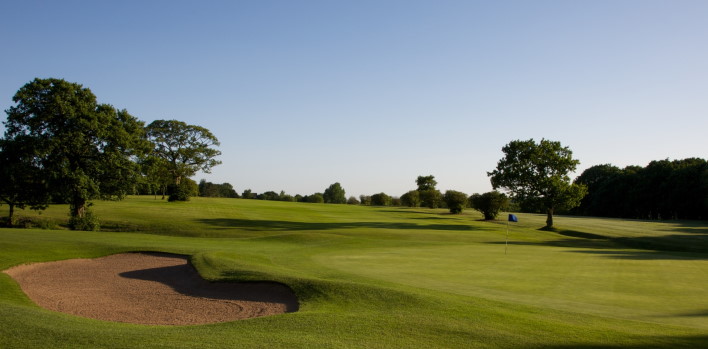Moortown

With a bunker renovation and extensive tree removal programme completed in the intervening time I was hugely impressed with how the course, which has a nice moorland feel to it, now played following the recent changes.
It produced a real firm and fast heathland test and with a stiff breeze whistling over the now more open property there was a touch of linksy-ness to the course with many of the holes favouring the ground game. It will be interesting to see how the course plays in the shoulder season because on previous visits, often in late-September for the Moortown Masters, it has played quite soft.
Moortown, founded in 1909 and host venue of the Ryder Cup in 1929, scores well in all departments.
It is testing from the tee but gives you plenty of options thanks to danger at differing distances and this is something I always like. With the firm conditions there was a premium on finding the relatively generous fairways and thus avoiding deceiving bunkers, a myriad of ditches, a plethora of heather and sporadic patches of gorse. Driver is not always the club of choice from the tee, especially for longer hitters, because quite often placement is king and increased length only brings more trouble into the equation. There is a really good variety of tee-shots - some ask you to move it one way or the other whilst there a couple of blind ones too - and generally speaking this is a definite highlight of Moortown. The only drive I find a little awkward is the 16th where essentially a large oak tree directly faces you from the tee at around 230 yards (from the blues) and pushes you towards a stream which cuts across the fairway on the angle; the ideal shot is almost to land short of the tree and run your ball under it!
Good quality approach play is essential too and whilst most will not play from the 6,980-yard blue markers whichever way you cut it up Moortown is a long golf course, even with plenty of run on the ball you will face some lengthy second shots but again there is a reasonably good balance. A number of times you will play to greens that are domed and will deflect a shot that is teetering on the edge. Possibly the shortest approach shot you will play is at the fifth yet I always struggle to hit this one in regulation because of its crowned nature. The sixth is also a tough one to find as is 14 which incidentally used to play as a par-three before a number of changes were made to the course over the years which included creating two new holes at six and seven and losing a short hole at the far end of the heath which you can just make out if you know where to look.
And the greens are simply excellent with some subtle, and some not so subtle, borrows on the putting surfaces along with several cute fall-a-ways and attractive bunkering. Indeed virtually each and every green at Moortown holds interest and your work is never done until the ball is in the hole. The pick of a very good bunch for me are the first, second, eighth, 10th, 15th and 18th.
The stand-out hole is the tenth “Gibraltar” which effectively enabled the creation of Moortown because this was the par-three that designer, Dr. Alister MacKenzie, built to convince prospective members what could be achieved at this now iconic North Leeds venue.
There are many other fine holes but the unrelenting consistency to the entire round is the main strength of Moortown. The other one-shotters don’t quite shine as bright as the tenth - indeed the fourth is the only hole I feel that has not benefited from the tree removal - although the eighth is a wonderful example of a long par-three which plays remarkably well at any length.
Each of the three par-fives have brilliantly defended greens. The one at the first is angled and heavily bunkered. The seventh is raised and has a sharp drop-off to the right whilst the 12th is still a hole I haven’t quite figured out how to play and this is largely thanks to the green which has a narrow entrance and falls away from you.
Then there is a succession of strong, solid and at times spectacular par fours. The one that trumps them all is the finisher. At 434-yards the 18th at Moortown is amazingly only the sixth longest on the course but it is a cut above the others and into any sort of breeze it will take two mighty blows to reach the green which sits tight to the clubhouse. The fairway, trees to the left and a series of bunkers down the right, rises slightly before curving to the right and descending gradually. The putting surface is slightly angled from left-to-right and flanked on both sides by sand as well as 40-yards short. It can be a terrifying shot and I suspect golfers will come up short at this hole more than any other.
It would be remiss not to mention the near neighbour just across the road, Alwoodley, because they are regularly compared and whilst I’ve no hesitation in saying that Alwoodley is the better golf course Moortown has certainly closed the gap over recent years and is a stand-out venue in the North of England.



